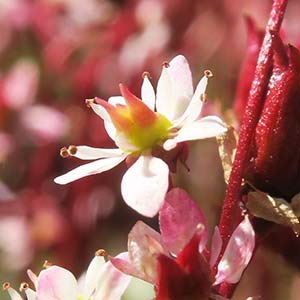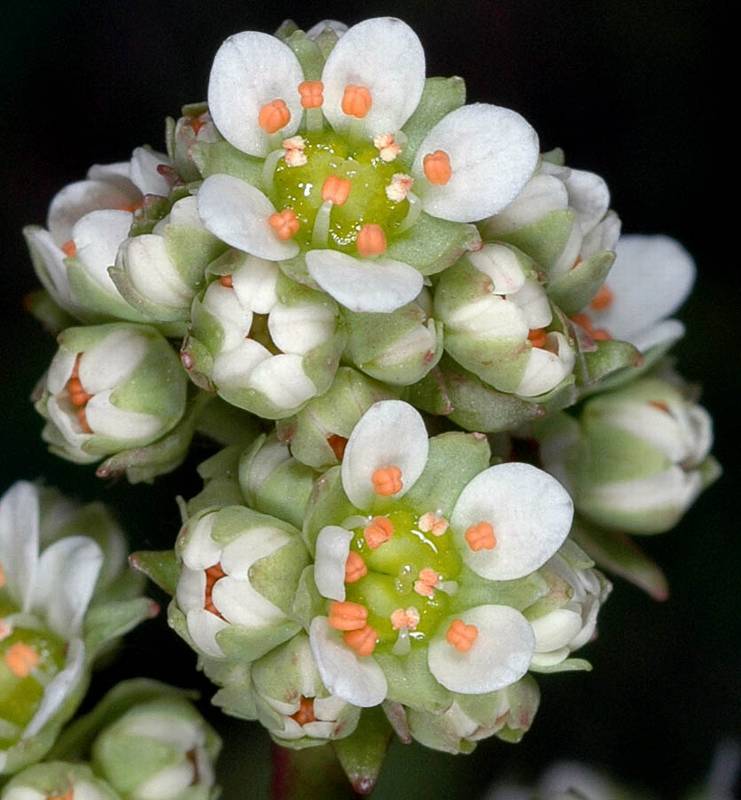Micranthes lyallii
Micranthes fragosa
Lyall's saxifrage, red-stemmed saxifrage
Clayton's saxifrage
Leaves all basal, the leaves wedge-shaped to fan-shaped, 10-25 mm. long and nearly as broad, coarsely dentate with 7-9 teeth, with slender petioles of similar length, glabrous or with a few soft, brown hairs.
Leaves all basal, petiolate, the petioles flattened, 4-10 cm. long;
blades broadly ovate to deltate, 4-10 cm. long, fleshy, the base tapered, the margins entire, hairy, the surfaces nearly glabrous.
Inflorescence, calyx and fruits often bright red; inflorescence a cyme with up to 15 flowers, the peduncles slender, often with linear, entire bracts;
calyx lobed almost to the base, the 5 lobes oblong-lanceolate, 2-3 mm. long, sharply reflexed;
petals 5, white, aging to pink, 2.5-4 mm. long, the blade oblong-oval, rounded to a short, broad claw;
stamens 10, equaling the petals, the filaments white, club-shaped;
carpels often 3-5, fused only 0.5-1 mm., the ovary mostly superior, the carpels tapered to styles less than 1 mm. long.
Inflorescence an elongate, conic, open, compound panicle with 30 or more flowers, 20-50 cm. long, with purple-tipped, stalked glands;
sepals 5, spreading, ovate to deltate;
petals 5, white, not spotted, clawed, 2-3 mm. longer than the sepals;
stamens 10, the filaments linear and flattened;
pistils 2, fused half their length.
Follicle 7-12 mm. long exclusive of the slender, divergent, stylar beaks.
Capsules green or reddish-purple.
Micranthes lyallii
Micranthes fragosa
- Local floras:
CA,
OR,
WA
- Local Web sites:
CalFlora,
CalPhotos,
Flora NW,
PNW Herbaria
WildflowerSearch
iNaturalist (observations)
USDA Plants Database
- LBJ Wildflower Center
- SEINet
- Plants of the World Online
- Encyclopedia of Life
- Wikipedia
- Google Image Search



